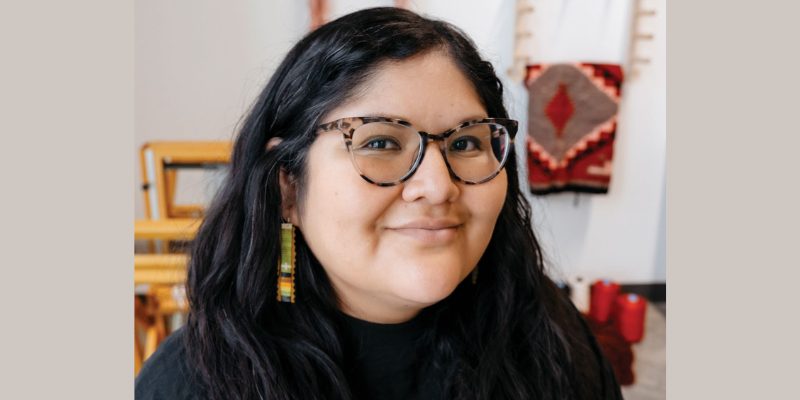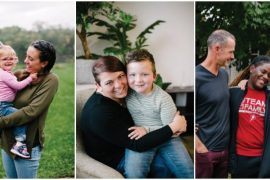By Katie Vaughn | Photo courtesy Dakota Mace
For Dakota Mace, art is inherently connected to history, to family and to the land where she was raised.
Originally from Albuquerque, New Mexico, Mace is a Diné (also called Navajo) artist whose work is based in photography and also features media inspired by family members who excelled in weaving, beading and silversmithing.
In her work, Mace employs a variety of alternative photography techniques, particularly cyanotypes and chemigrams — both of which utilize natural light to create an image.
“It’s very expressive and intuitive,” she says. “I love experimentation.”
Mace moved to Madison in 2014 to study with Ho-Chunk photographer and UW–Madison art professor Tom Jones. She earned MA and MFA degrees in photography and textile design, and now works as a photographer and research specialist for the university’s Helen Louise Allen Textile Collection, in addition to creating her own art.
New York City’s Bruce Silverstein Gallery represents Mace, and her work was recently exhibited at the Armory Show, the Whitney Museum of American Art and the Minneapolis Institute of Art. And this summer, she won the Foundation for Contemporary Artists’ prestigious Ellsworth Kelly Award, which she will use to prepare for a solo exhibition at SITE Santa Fe in 2025.
Mace often creates work in layers, series and multiples, to represent both individual and collective stories of Diné heritage and culture. She’s interested in questions of identity and tradition and pushes for broader explorations of both.
“A lot of Indigenous artists are sort of stuck with this question of, ‘What is tradition?’” she says. “I want to open up more opportunities to see change shifting and the beauty of ingenuity. That’s part of our history. We’ve never been static.”
It’s crucial, Mace says, that Indigenous artists be the ones to tell their own stories, and for her, it means finding a balance between past, present and future. “I want to collapse all three and ask, ‘What does it mean to be Diné?”
And when she asks that question, a line of connection emerges.
“I look at how we have different variations of who we are, but that eventually we all go back to the land and become part of the land,” she says. “The land is our storyteller.”



